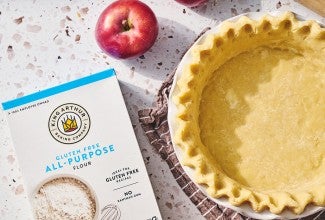Gluten-free pie crust: 9 tips for success
With the right ingredients and recipe, you can make great gluten-free pie crust.
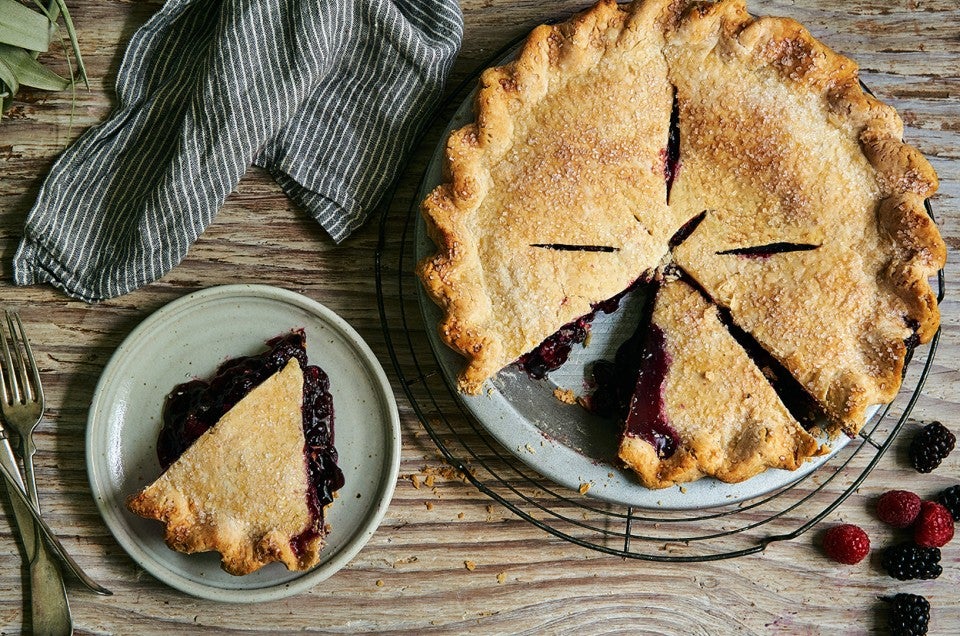

Do you have a house guest this holiday season who's gluten-free? Or are you yourself gluten-free and responsible for bringing a dessert that everyone will enjoy? If so you’re in luck, because today we’re going to help you perfect your very own gluten-free pie crust.
If there's one thing people struggle with when it comes to holiday baking, it's pie. Why? Because of the crust. When you make pie crust gluten-free, it's even more of a challenge. Many gluten-free pie crust recipes you find online tend to not hold their shape, crumble when you try to put them into the pie dish, or are more like a tart shell that you press into the pan. Sure, they still taste good, but they’re not going to be that tender, buttery, flaky pie crust that you’re looking for.
That's where we come in. We have several extensively tested gluten-free pie crust recipes (made with our premium gluten-free flours!) to ensure your success: Gluten-Free Pie Crust, Gluten-Free Classic Double Pie Crust, and Gluten-Free Pie Crust Made with Baking Mix.
But rather than just sending you off with the recipe, we’ve pulled our baking minds together and come up with essential tips to ensure you make your best gluten-free pie crust yet.
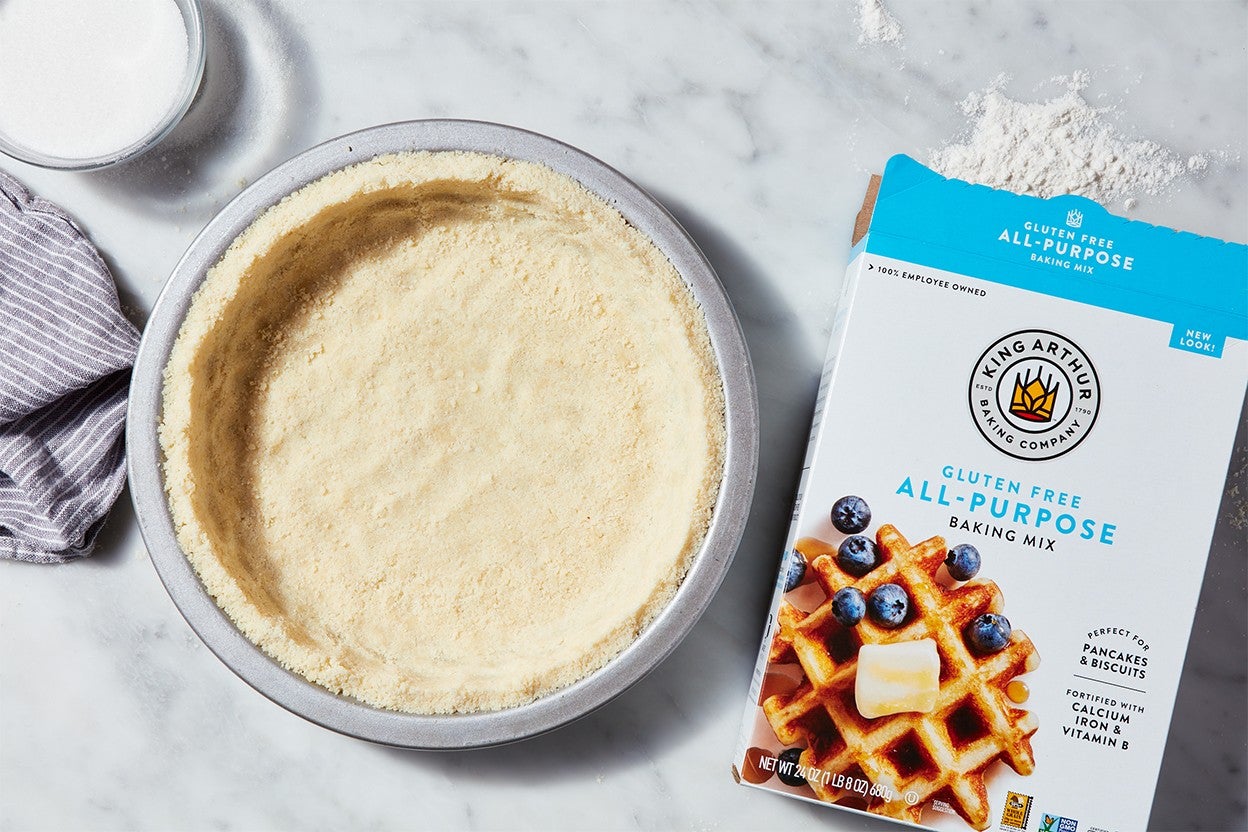
Why? They just aren’t the same. Wheat-based crusts contain gluten and therefore typically need different ratios of liquid as well as different flour ratios. If you simply swap in a gluten-free flour to your favorite pie crust recipe, you may find yourself with an unworkable crust that little resembles its classic counterpart. Instead, go with a trusted gluten-free crust recipe (like ours!) that you can have confidence in, and know it will turn out.
Our three primary gluten-free pie crust recipes each call for a different gluten-free flour. Depending on what you have in your pantry, choose the right recipe accordingly! And because each recipe is developed for each specific flour, don't swap one for the other — you won't get the same results.
In our Gluten-Free Pie Crust recipe, you’ll notice we add both Instant ClearJel and xanthan gum to the dough; these specialty ingredients both keep the crust pliable and easy to roll out, which is essential when there is no gluten present to help with dough texture. Don't skip them!
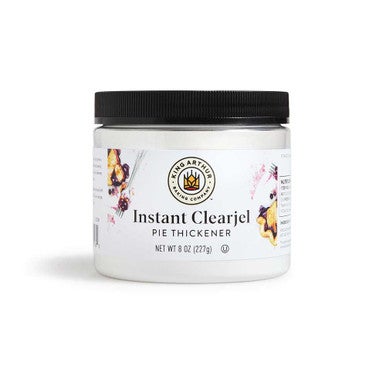
Oftentimes you’ll see pie crust recipes that tell you to use your food processor. While this does work in a pinch, I always think working the butter in and incorporating the wet ingredients by hand leads to a more flaky and delicate result.
Gluten-free pie crust can be difficult. It’s more delicate, so it can sometimes be hard to create that “perfect” double crust you might be accustomed to. If your gluten-free dough isn't cooperating, try something different. Maybe try a lattice or even do a crumble topping on your apple pie. (It’s like an apple crisp and apple pie together — delicious!)

With any pie crust recipe, the key is using cold butter. The cold butter will help make your crust lighter and more flaky. And it'll be easier to work with, too, something that's particularly important for gluten-free pie crusts.
We suggest that you chill your gluten-free pie dough before rolling it out to ensure that the butter stays cold and doesn’t start to melt. After you've mixed the crust, wrap it in plastic wrap or waxed paper and let it chill for at least one hour, or even overnight.
If this is your first gluten-free pie, please test it first. Not just because you want to make sure it turns out perfectly for the big event, but also to save yourself stress. The last thing you want to do is have a complete mess on your hands that morning, with no backup plan and no pie at Thanksgiving.
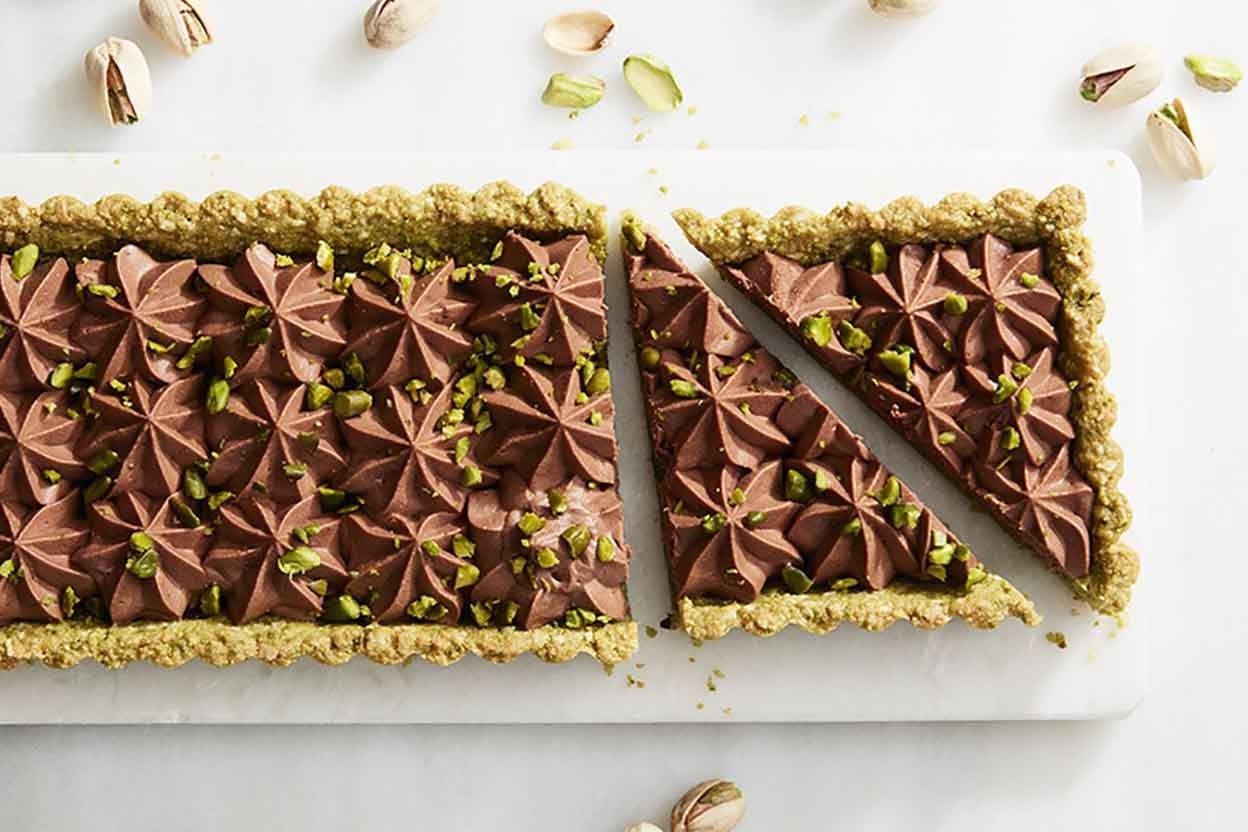
I know you probably have your mind set on the exact pie that you’re going to be making this year, but I encourage you to also have an open mind (especially if this is your first gluten-free pie baking experience). Perhaps instead of the “traditional” version, go with a nut-based crust or even a cookie-based crust (using gluten-free cookies, of course). It’s OK to change it up — who knows, you might be surprised and find that your family actually enjoys it better!
We hope these tips are helpful and give you inspiration for creating your very own gluten-free pie crust. To get started, try out our recipe for Gluten-Free Pie Crust.
Editor's note: This blog was slightly updated in July 2024.
